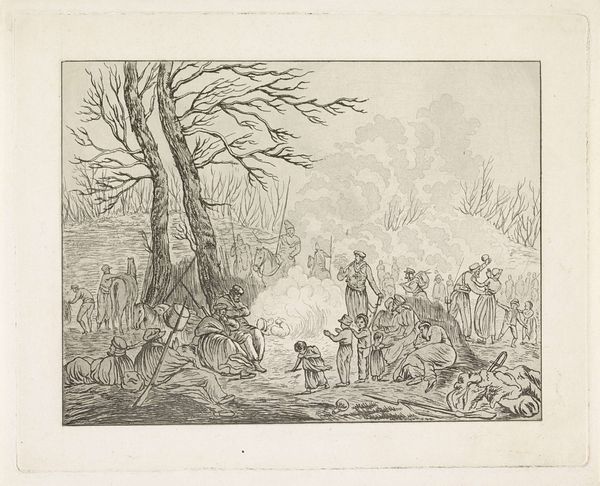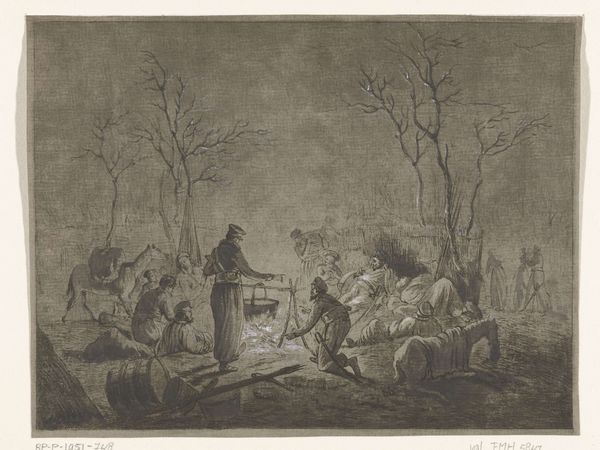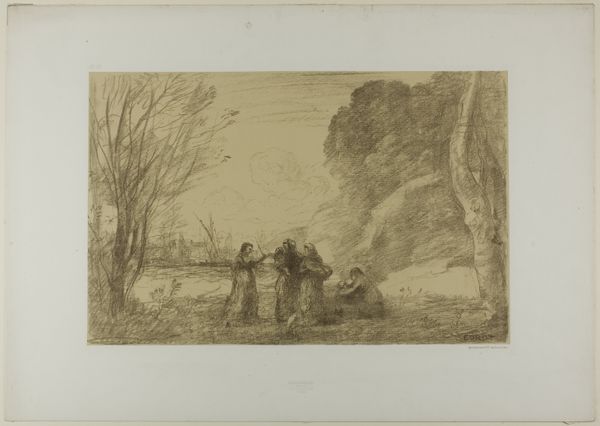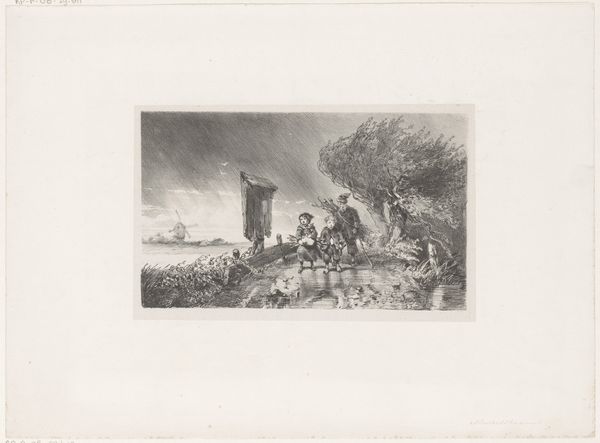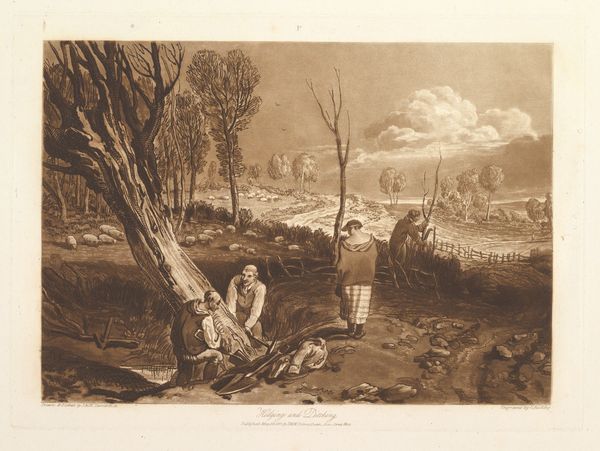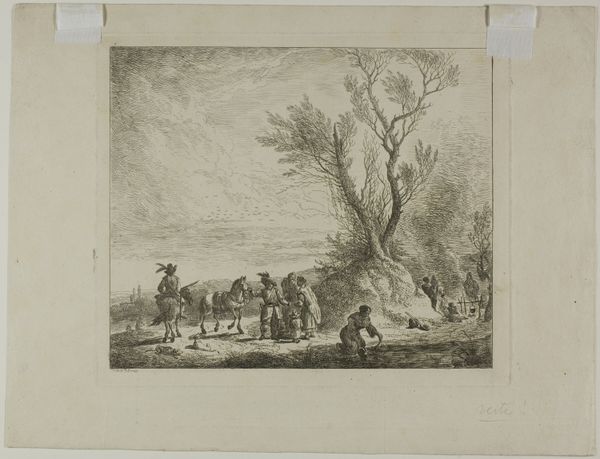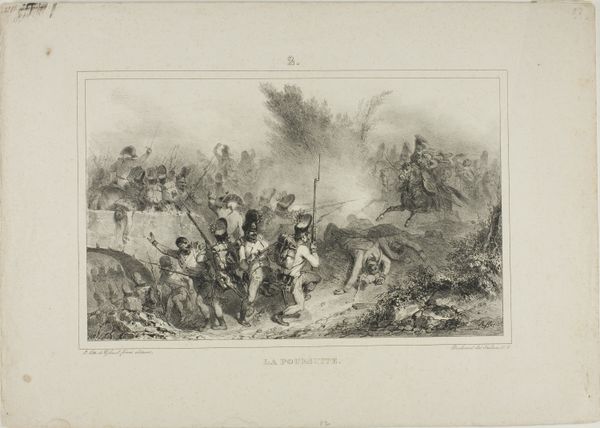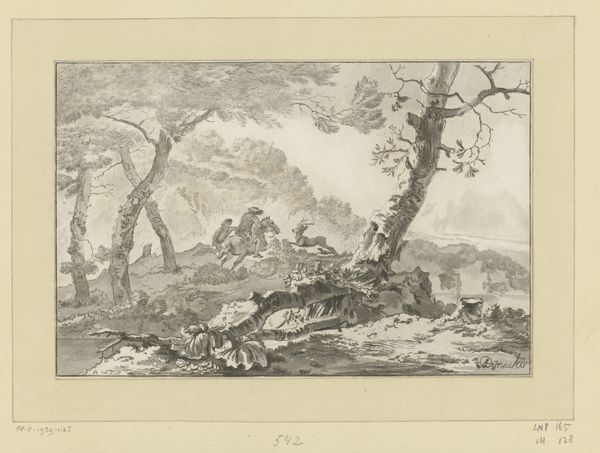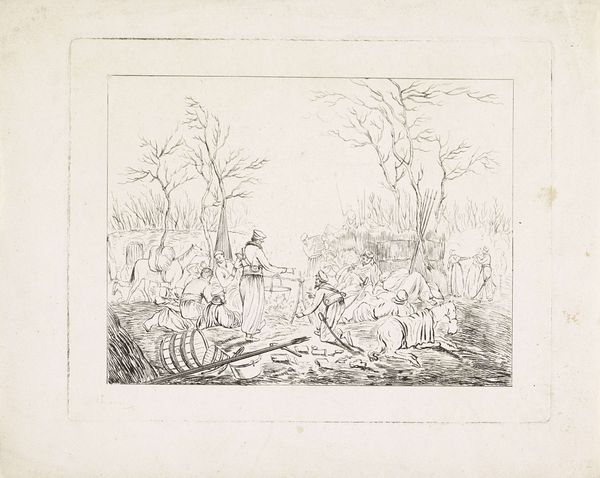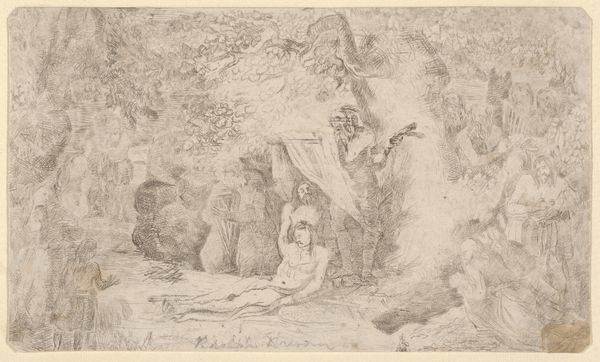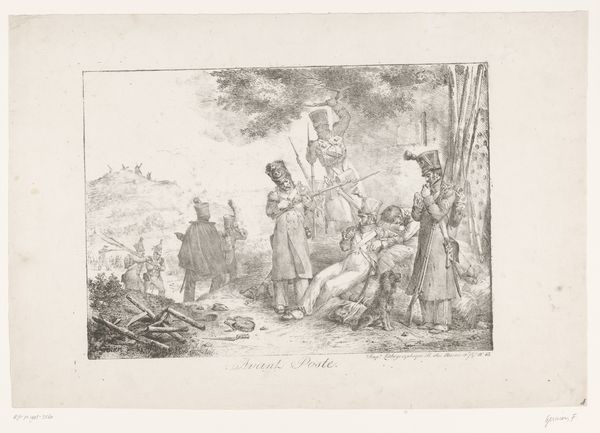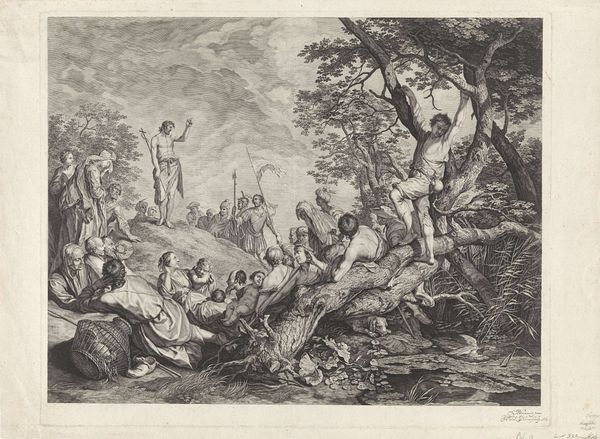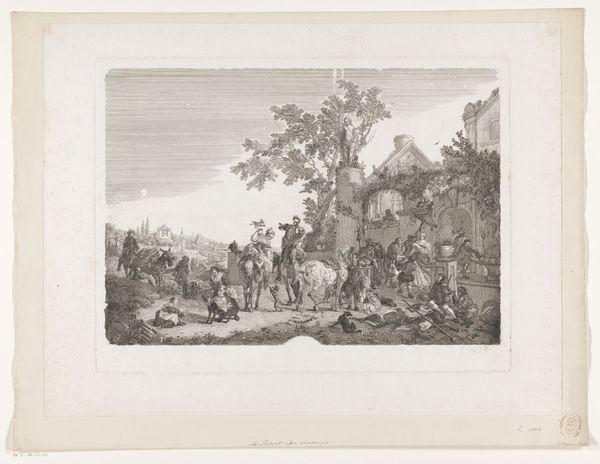
drawing, ink, pencil
#
pencil drawn
#
drawing
#
light pencil work
#
narrative-art
#
pencil sketch
#
sketch book
#
landscape
#
figuration
#
personal sketchbook
#
ink
#
pencil drawing
#
romanticism
#
pen-ink sketch
#
pencil
#
sketchbook drawing
#
pencil work
#
genre-painting
#
sketchbook art
Dimensions: height 190 mm, width 240 mm
Copyright: Rijks Museum: Open Domain
Curator: This intriguing sketch before us is "Bivak van Kozakken, 1813," or "Cossack Encampment," rendered in pen and ink by Pieter Bartholomeusz. Barbiers. It resides here in the Rijksmuseum. Editor: It has the aura of captured moment, doesn't it? A group of figures huddled around a fire, their forms fading into the dusk—it evokes the vulnerability of displacement, but with a touch of camaraderie. Curator: The setting indeed speaks volumes. The piece dates from 1813. We need to remind ourselves of the context; Europe was aflame with the Napoleonic Wars, and Cossack regiments were then very active across the continent. Barbiers has seized a scene of daily life for these itinerant soldiers. Editor: Yes, there’s a casual air, almost like an accidental photograph, as if the artist just happened upon this encampment while sketching in his journal. This naturalism feels particularly pointed given the Romantic style prominent at the time. I find that incredibly interesting. Curator: And did you notice the light pencil work? This wasn’t designed for display, in my opinion. Barbiers appears more intent on a record for himself, almost anthropological in approach. He's showing us not just Cossacks, but people making the best of difficult circumstances. Editor: It's definitely intimate and compelling because of that casual quality, but it would be short-sighted to assume there aren't issues around cultural appropriation present in the piece. How much did Barbiers know, truly understand, about the individuals that he chose to document? What were their views, and lived experiences, amid those wars? These Cossacks certainly have no voice within Barbiers's landscape. Curator: That tension, between observer and observed, gives it depth. Art is never truly neutral, is it? The artist is, after all, making deliberate aesthetic choices that frame the narrative in ways that could easily erase more difficult facts. That’s what makes the piece worth contemplating. Editor: Exactly. By pulling back layers of cultural context and history, the Cossack figures solidify from forms into figures. It goes beyond just a simple recording. This work reminds us to always consider whose stories are left unheard.
Comments
No comments
Be the first to comment and join the conversation on the ultimate creative platform.
